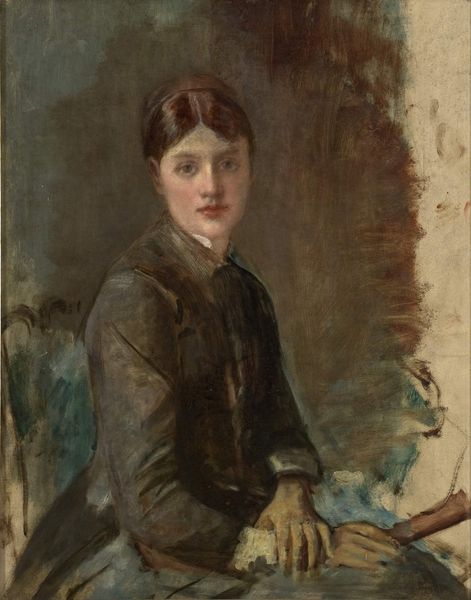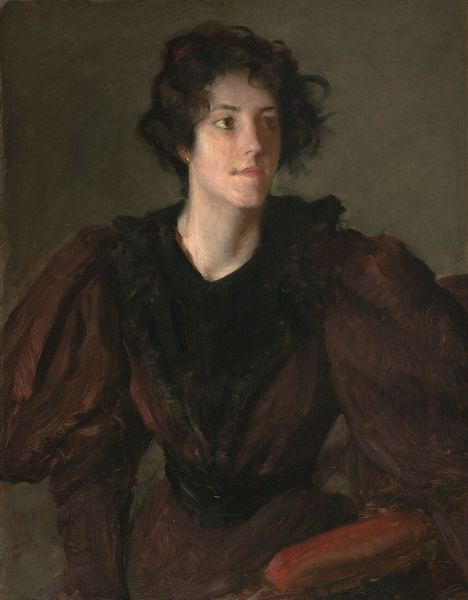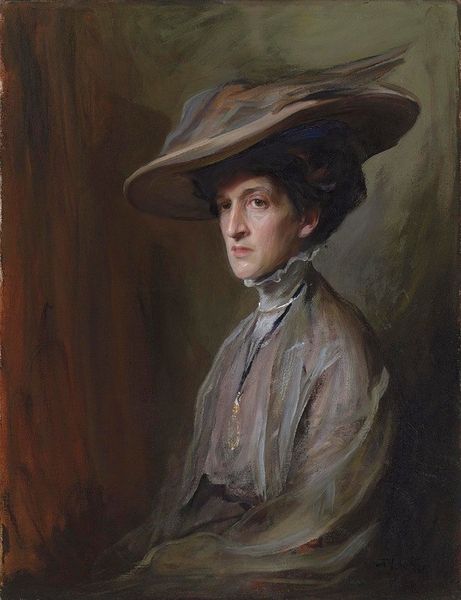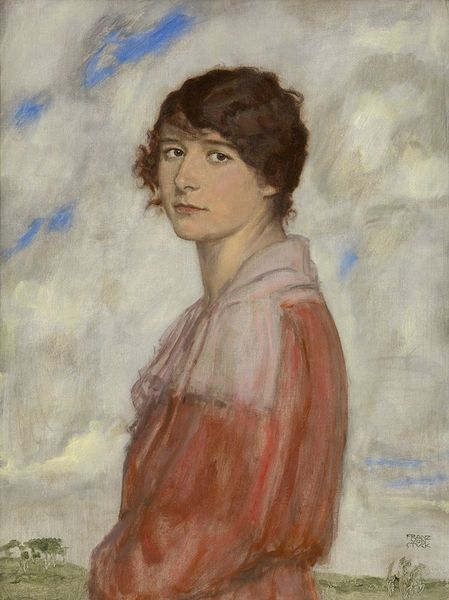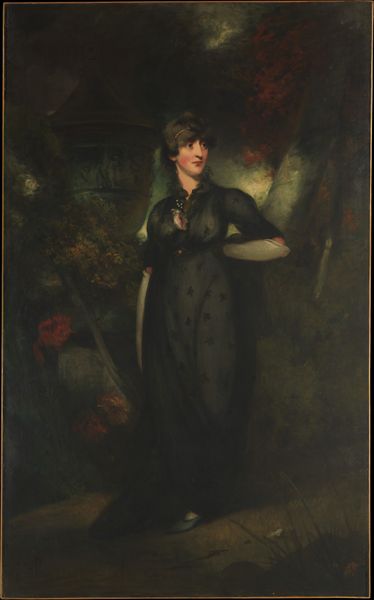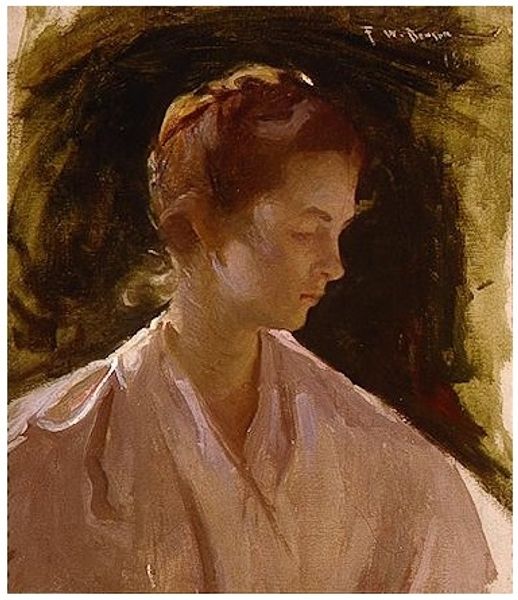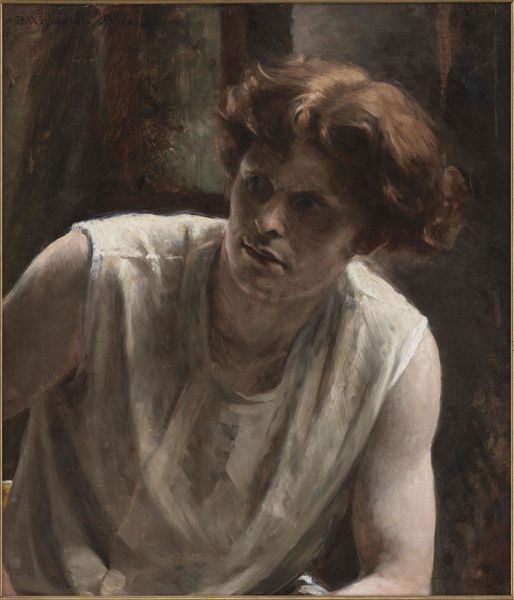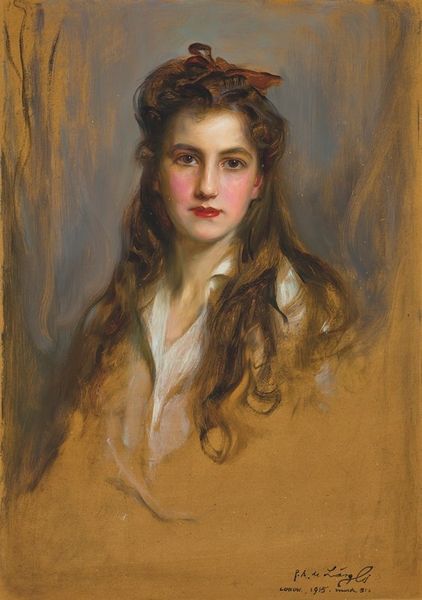
Copyright: Public Domain: Artvee
Editor: This is Jean-Joseph-Benjamin Constant’s 1895 oil on canvas, "Mary Newton Foote Henderson." I'm struck by how soft and luminous the colors are, particularly in the subject's cloak. What do you see as the defining elements of this piece? Curator: The oval format immediately creates a contained visual space. Note how the composition emphasizes the interplay between light and shadow. Observe the texture created by the visible brushstrokes – especially how it captures the ephemeral quality of light on fabric, juxtaposed against the landscape in the background. Editor: So, it’s really about the application of paint, rather than any narrative? Curator: Precisely. Consider the artist's use of color. The muted pinks and browns create a sense of warmth. Are these colors harmonious, or do they jar in some way? And how does the artist guide the viewer's eye with compositional choices? Editor: I see. The gaze is certainly directed to the model's face. It's interesting how she's looking back over her shoulder, breaking the formality typical of portraits. I’d be interested to learn how color theory or Gestalt psychology applies here. Curator: That is an excellent approach. By dissecting the work’s components—form, color, texture, and composition—we reveal the principles governing its aesthetic. A method of uncovering meaning via close visual readings. Editor: Thanks. Thinking about the work in those terms, I find myself appreciating its structure even more. Curator: Indeed. Focusing on such formal elements can unlock much about how the artwork communicates.
Comments
No comments
Be the first to comment and join the conversation on the ultimate creative platform.
